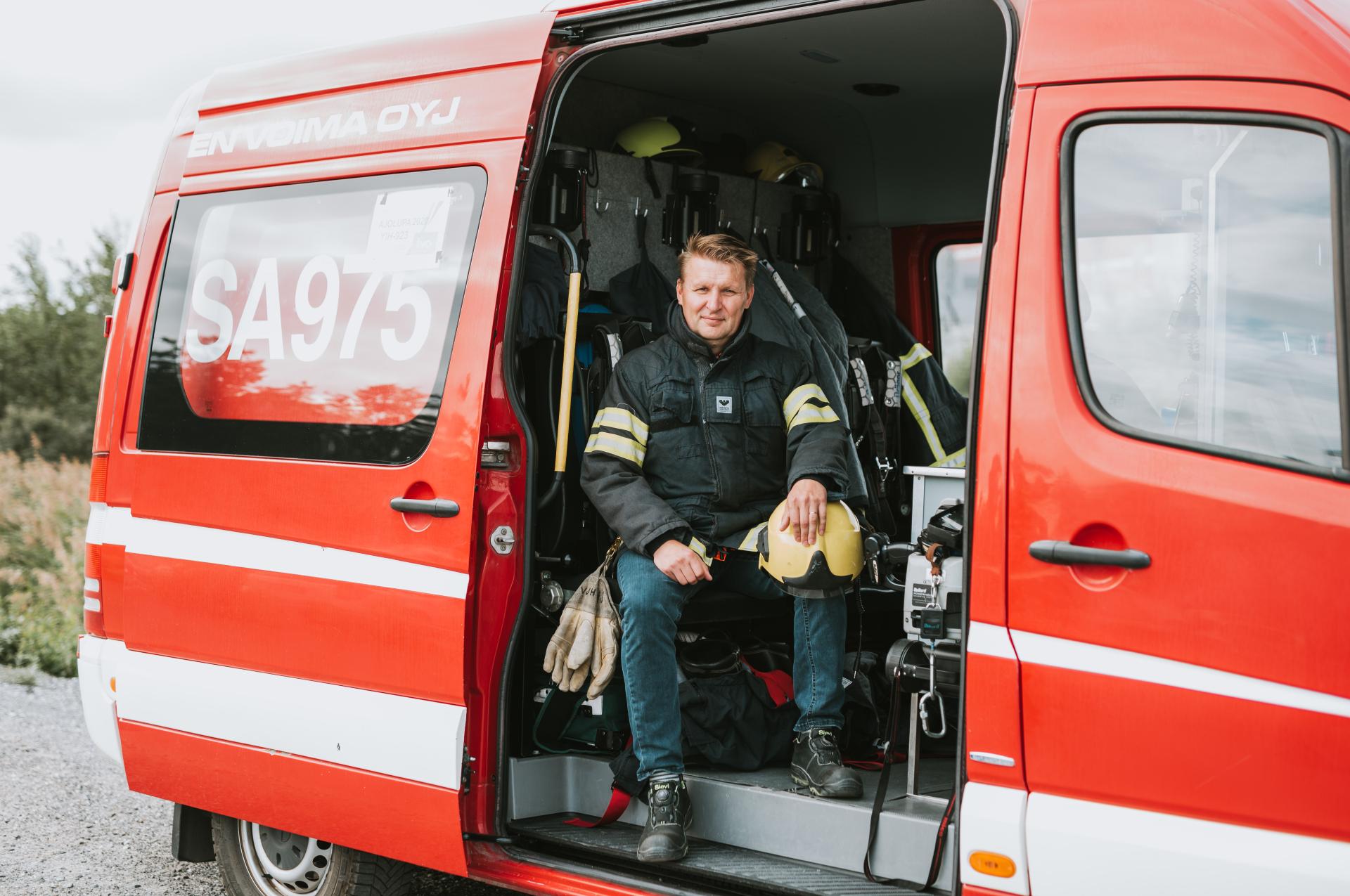Fire chief Eerik Nurmi, where's the fire?
What is fire protection like in a nuclear power plant? Eerik Nurmi, fire chief, has worked on the island for nearly 20 years. The prevention of accidents is one of the main activities of the Olkiluoto industrial fire brigade.

The fire station began operating in Olkiluoto in September 1976. It was set up in a service building, and first accommodated a fire engine hall and a small resting space assigned to the fire brigade and its drivers. The facilities were later expanded so that the fire engine hall came to house an office, small kitchen and respirator maintenance operations. In 1986, the fire brigade moved to the multi-purpose center, and since 2001, fire operations have worked out of the present location, in the Olkiluoto 1 protection center.
As for its equipment and operations, the Olkiluoto fire station largely corresponds to fire stations in cities and municipalities. The biggest difference lies in it not having the kind of a tower typical of fire stations.
“Our fire station has the same facilities as any other station. What we don’t have is a tower – the typical landmark of fire stations, which was formerly used for drying fire hoses and for training. We also do not have maintenance and drying facilities for fire hoses, but instead buy these services separately,” Nurmi explains.
Fire protection, which began as a hobby for Nurmi, captivated him through and through. The young fire fighter’s career path brought him to Olkiluoto for the first time in 2001. Nurmi’s involvement in the voluntary fire brigade of the Kauttua mills sparked an interest that made his career choice crystal clear. Nurmi has been in charge of fire safety at Olkiluoto 3 since 2012, and these days he also heads the joint fire safety organization at OL3.
“I joined the youth division of the Kauttua mills’ voluntary fire brigade in 1987. My dear hobby evolved into a professional career, and the fire-fighting sector took over in my life,” says Nurmi, looking back.
Anticipation and supervision are the fire master’s main work duties on the nuclear power plant site. Nurmi’s long career in the fire-fighting sector has also involved dramatic situations. However, there have been no serious fire accidents in Olkiluoto, thanks to the fire-fighting professionals working with the entire staff to successfully avoid any accidents.
“A fire master’s job is very diverse and is largely influenced by the location. For example, an on-call fire master at a fire station is responsible for leading emergency operations, whereas in industry, we mainly work on preventive measures to avoid accidents. Through supervision, we ensure that the staff works safely and that the work is carried out according to instructions. We also provide training for the staff, such as hot-work license and first-aid extinguishing training, as well as fire-safety courses for the operating staff. The most dangerous situations in this work happen during commuting, taking the form of, for example, near misses with deer. Even in these cases, we can all influence the course of events through our own actions,” Nurmi points out.
Nurmi recommends the fire-fighting sector as a career for young people who find it interesting. The sector offers diverse opportunities, and it is possible to find employment in various places, for example, in industry, rescue services, operational duties, and risk management or, say, as a fire inspector.
“Diversity and variation are the best sides of this profession. When you respond to an alarm, it is helping other people that makes the profession so worthwhile!”
Share